Hello travelers. Today we will explore the city of Plovdiv. It is very characteristic and has its own charm.
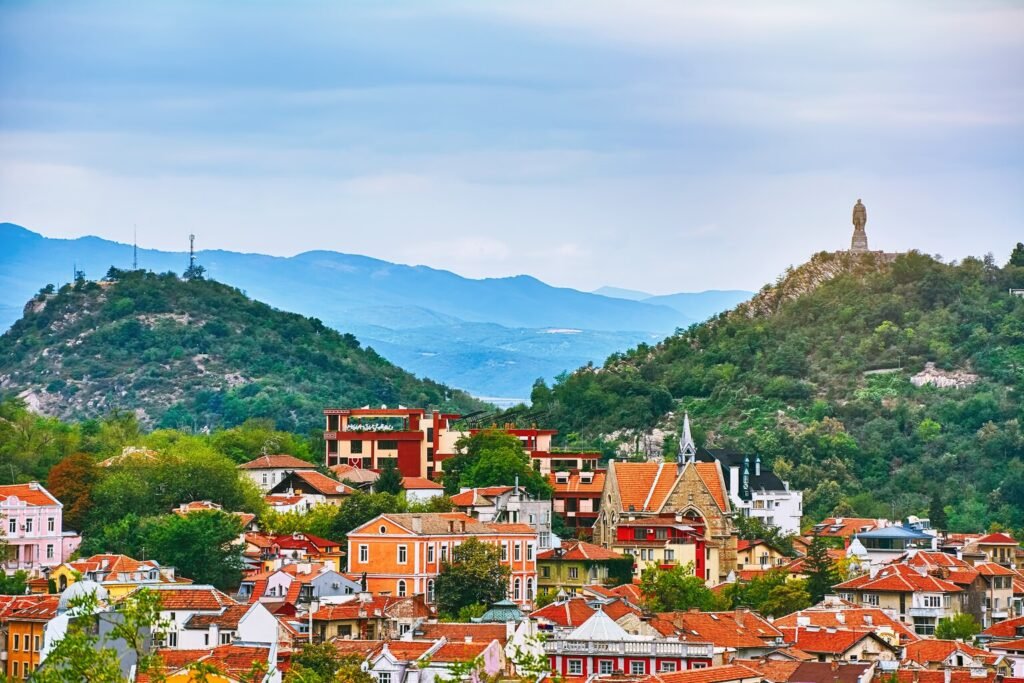
Plovdiv is a city located in central Bulgaria. The city is one of the oldest in Europe. Plovdiv was located on 7 hills: Dzhendem Tepe (the highest of the hills), Bunarzhik, Sahat Tepe, Nebet Tepe, Dzhambaz Tepe, Taksim Tepe, Markovo Tepe.
The last one unfortunately no longer exists. At the turn of the 19th and 20th centuries, the stone extracted from it was used to build roads and sidewalks in a large part of the city.

Alyosha, Bunarjik hill
Alyosha – When in Plovdiv, it is worth visiting the Bunarjik hill with a characteristic monument several meters high on the top. It is an 11-meter-high marble monument depicting a Soviet soldier.
The monument refers to the events of World War II, when Bulgaria was under Soviet occupation. This monument is called Alyosha. Alyosha is the name of a song by Konstantin Vanshenko and Eduard Kolmanovski, which was the anthem of Plovdiv until 1989.
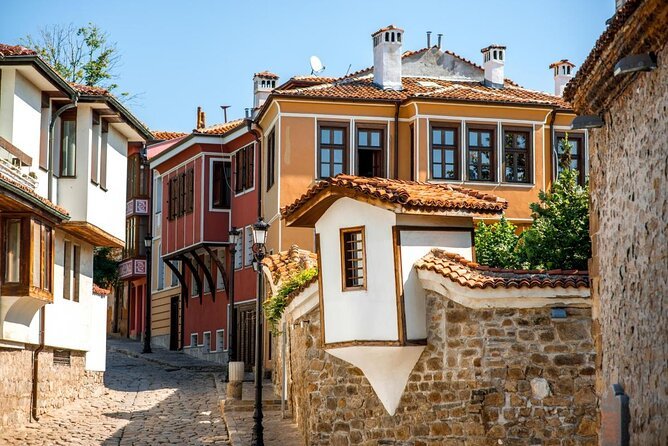
Old Town, Plovdiv
It is worth visiting the Old Town, which is situated on three hills and is characterized by narrow cobbled streets and buildings of various architectural styles. You can see there elements of ancient art, the Middle Ages, but above all, the Bulgarian Renaissance.
In the Old Town there are numerous museums, art houses, galleries, churches, cafes, hotels, restaurants, green squares, and residential buildings.
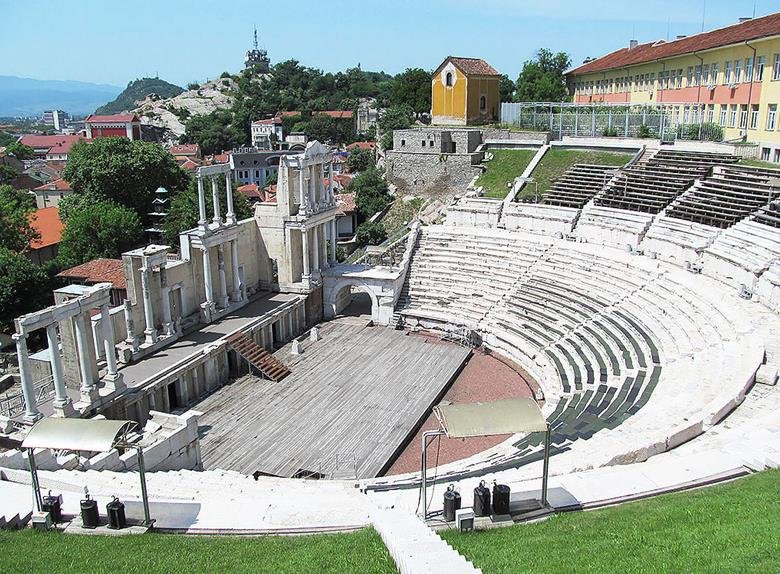
Plovdiv Roman Theater
In the Old Town we can find traces of the Romans. The most important monument here is the Roman theater, which was most likely built in 116-117 AD. The auditorium is shaped like a horseshoe with 28 rows of marble seats carved into the rock. The theater can accommodate up to 7,000 people and performances are still held there today.

Roman forum of Philippopolis

The Roman Forum of Philippopolis is a rectangular forum (square) surrounded by the ruins of several ancient administrative buildings in the center of the ancient city of Philippopolis (modern Plovdiv). It was the center of public, administrative, commercial and religious life of the ancient city.
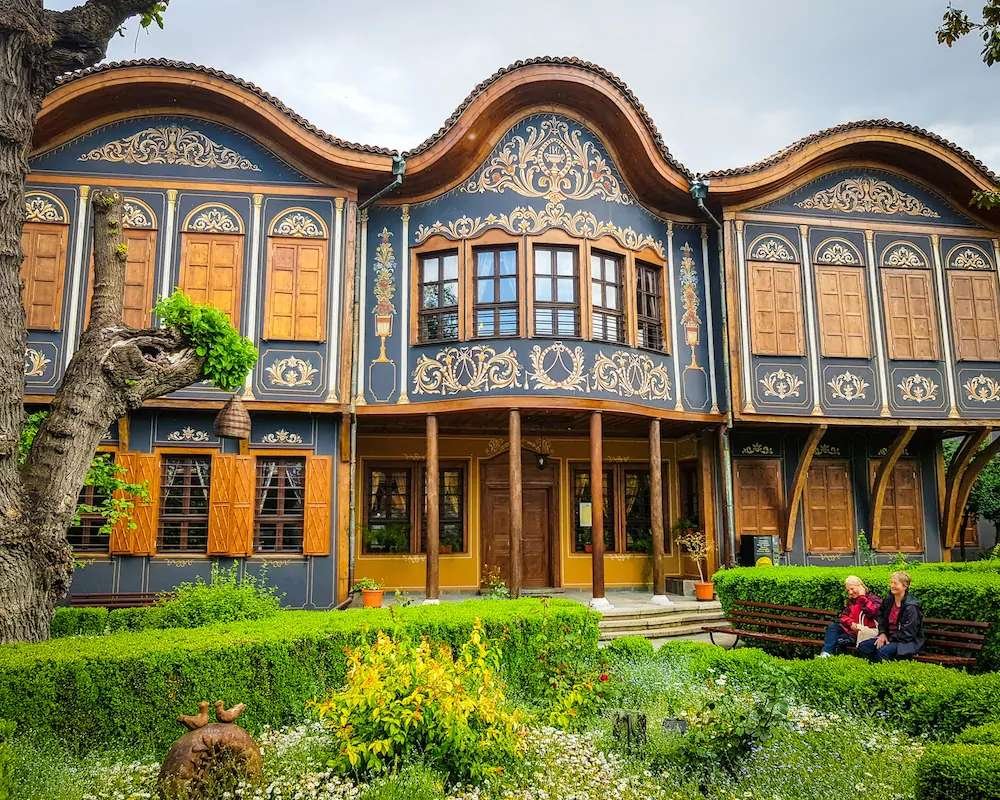
Ethnographic Museum in Plovdiv
Also in the Old Town is the Plovdiv Ethnographic Museum, a place of Bulgarian history, traditions and culture. The museum building is one of the most representative buildings from the Bulgarian Revival period, known as the Kujumdzhioglu House, built in 1847.
The exhibits include richly decorated folk costumes, traditional furniture, tools and household utensils, as well as items related to crafts, such as pottery, blacksmithing and weaving. It’s really worth traveling back in time to Bulgaria’s past.
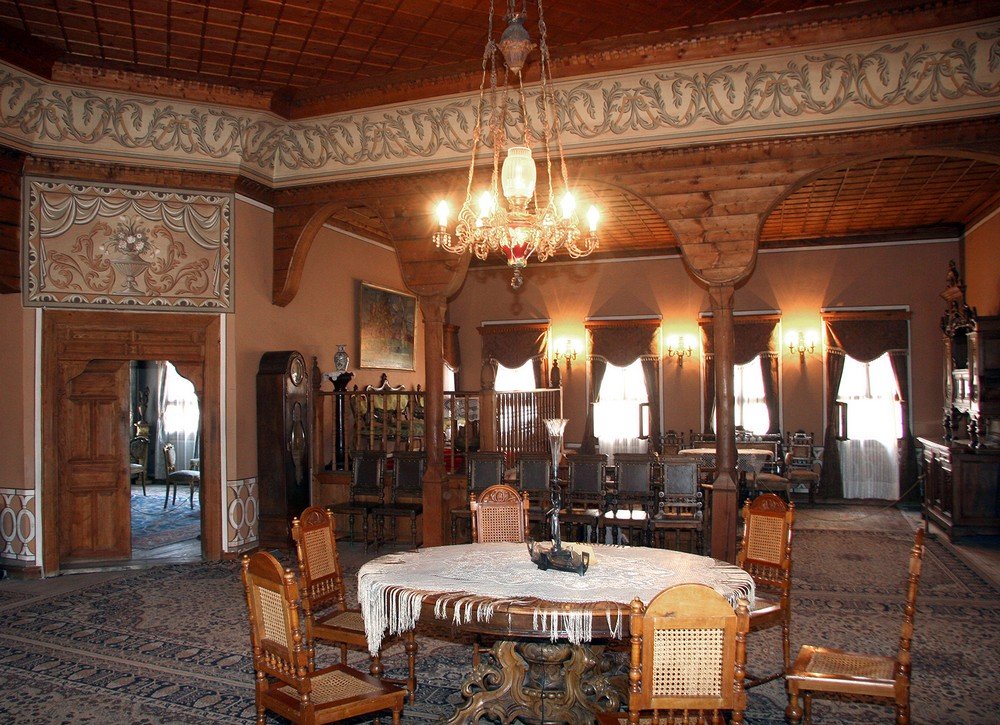
Balabanov’s House, Plovdiv
In the Old Town we can also find the Balabanov House (museum), which owes its name to its last owner, a wealthy merchant. The original building came from the 19th century (the current one is a reconstruction) and was a typical example of villas inhabited by wealthy city residents at that time. The well-kept interiors include rich furnishings and a picture gallery.
Plovdiv, a remote city, is considered the oldest city in Bulgaria. Thanks to good organization, you can visit the city even in one day. The ancient ruins that can be found here at every step contrast with the traditional buildings, communist buildings and the pub and artistic district. Lovers of scenic panoramas will also be pleased, the view of 7 hills characterizes Plovdiv.
